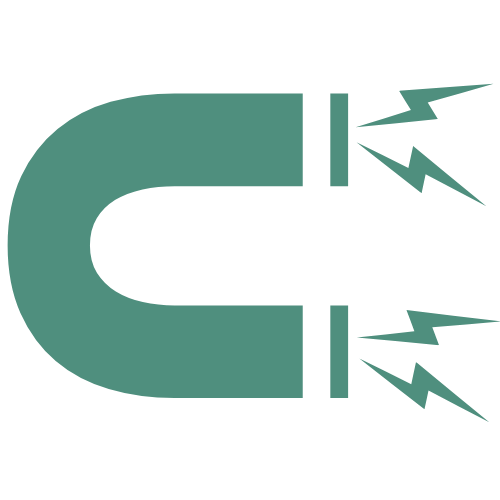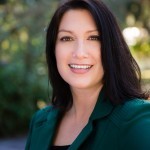A future-focused resume can turn turn your work experience into pure opportunity, like Rumpelstiltskin turned straw into gold.
I’m not suggesting your past work experience is straw, though many of my clients are so over their recent work and former employers that they might.
But whether you’re proud of the work you’ve done in the past or not, whether you want to continue to do that work or not, you can portray it in a way that will help you create future possibilities beyond your past experience.
Contrary to popular opinion, your past doesn’t dictate your future. Nor does your past work dictate your future value.

Once upon a time, resumes were historical documents.
Maybe you remember the following method of writing and sending resumes?
Until recently, most resumes included only details from the past, like where you’d gone to school, what you studied, where you’d worked and in what roles.
The long-standing trend was to send that same past-based resume off to every potential employer you targeted and hope that the hiring managers would recognize your candidacy.
I call this asking hiring managers to “do the math”: to review your experience, compare it to their required qualifications, and then decide if you add up to a worthy candidate for their position.
But the past-focused resume belongs in the past.
A future-focused resume for modern candidates
Modern candidates know better. You don’t sit back and let your past and the hiring managers determine your future. Nor do you ask your target hiring employers to do the math for you.
You do the math.
Your future-focused resume will help you get hired for new opportunities that support your career vision.
You’ll choose a specific employment target and demonstrate on your resume what you want to do for them and how you’ll deliver value.
Here’s an example of future-focusing your resume:
One simple way to do future-focus is to specifically name your career target at the top of your resume.
Under the letterhead, create a short summary section. Replace the common Summary header with a title that is true for you and also shows exactly what you’ll deliver to your target employer.
If you’re applying for a title you’ve already held, name it. Claim it. Write it at the top of this section. For instance, if you’ve already held a position in outside sales, you could entitle this section, “Outside Sales Rep.” Or, better yet, “Top Producing Outside Sales Rep.”
If you haven’t held that title, create a title that is true for you and will speak to the target position. For example, if you haven’t yet held your target title of Outside Sales Rep, but you do have experience problem-solving for clients and helping to negotiate solutions, your section title might be, “Charismatic & Growth Driven Problem Solver | Win Win Negotiator.”
You’re “doing the math” by showing your target employer exactly what value you’ll deliver for them, rather than asking them to figure out what exactly you want to – or are qualified to – do for them. And you’re doing it at the very top of your resume, rather than asking them to comb your resume to find your past titles.
Use the rest of that top section to present who you are as a professional that’s relevant to your target position.
Then, highlight throughout the rest of your resume your relevant experience to the target in order to demonstrate what you’ll contribute to your target employer. Leave out the experience that’s not relevant or interesting to this particular future vision.
More than one potential future? Write more than one future-focused resume.
Of course, you might choose to target another employer, position, or industry. For each vision, or target, simply tell a clear story of what you’ll deliver and how, in a new, target-specific resume.
Start at the very top of your new resume, speaking specifically to your new target.
The broad facts of your past, like where you worked and when, won’t change from one resume target to the next. But you might spotlight different metrics that will be relevant to each vision and target.
The clearer you are about each target and the more you think about your work as value you deliver, the more clearly you’ll be able to bridge the gap between your past experience and your future.
You can learn more about getting to know what’s relevant to your target employer here.
What’s your prospective vision?
But first, you’ll need to have a vision of where you want to go. Take the time to sit with yourself (or hire a career coach to help you) to decide your vision.
This could be as simple as looking at job descriptions to see which are the most inspiring, which feel like they were written for you and what you want to contribute in the future.
Or you might need to start by your considering which things you’ve loved doing. And notice which you’d prefer never to do again.
As you identify your vision(s), you’ll then look for specific positions, industries, or even companies to target. You’ll begin to create a path toward that vision.
Does this feel a little strange to you?
If so, you’re not alone. A future-focused resume is a rather large mindset shift for many people.
Your belief system creates your future vision. Your future vision informs your resume.
Maybe you’ve believed that what’s printed on your resume will dictate the position you’re qualified for. If you continue believing this, your career path will likely stay the pre-determine course, more or less.
You’ll apply for the same type of jobs. You’ll stay in the same industries because you believe that’s how a job search and career evolution works.
If you long for a career transition, you might look at your old resume and think “but this is all I know how to do.”
But, what if you shift to believing your world is wide open? You could get clear on what you care about and choose the vision of where you desire to go next. Then your belief system will allow you to help shape your future into something new. You’ll showcase your transferable skills by demonstrating relevant projects and outcomes that are valuable to target positions you really desire.
Choose your vision first. Then, write your resume to fit that vision.
When is the best time to write your resume? The answer is not when you need a job. It’s when you’re clear on the future you want your resume to create.
Write a future-focused life!
This concept of a future-focused resume is, of course, true for more than just resumes and career paths.
You may have been told that your past dictates your future. And certainly, you can choose to allow your past to dictate your future.
If you’ve previously felt unsuccessful, stuck, or unfulfilled, you can choose to believe that your future will remain the same.
But you could also choose to challenge that belief. You could decide to believe that that you can cultivate the life your heart desires. Then you can spin the straw of your past into the gold of your future.
That’s the first step to writing your future-focused life. Happy spinning!
Want help writing your future-focused resume? Contact me about our done-for-you custom crafted resume services. Need support in clarifying your vision or learning how to spin your past, no matter what it is, into a golden future? Let’s chat about private coaching.
—————-
Struggle to talk about what you do, or feel like you’re driving a bus with no steering wheel when it comes to promoting yourself in your career? (Hey, you’re not alone! Almost all my clients say the same, at first. And I’m here to help.) Join my free workshop coming soon: Define Your Brand – Make It Rain Job Offers and Opportunities.


